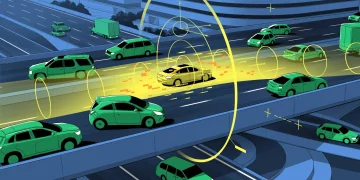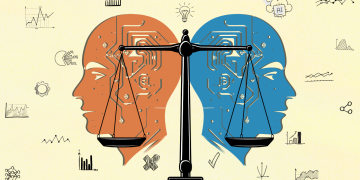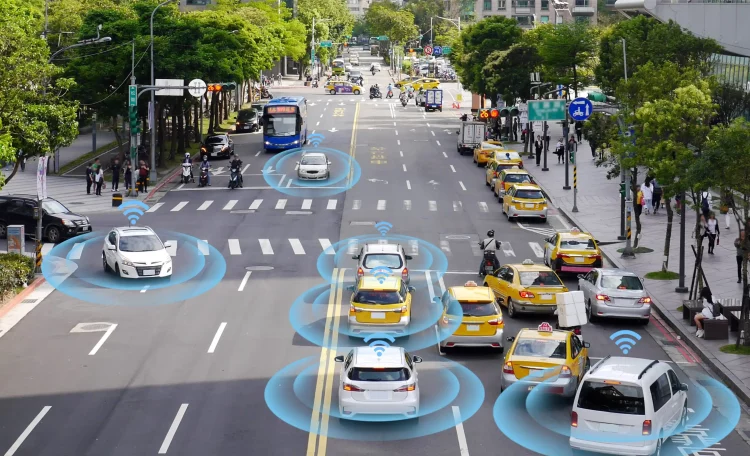In the last few years, autonomous vehicles (AVs), also known as self-driving cars, have captured the imagination of both the tech industry and the general public. Once a concept relegated to science fiction, AVs have now emerged as one of the most exciting and transformative applications of artificial intelligence (AI). Researchers, automotive companies, and technology giants are pouring immense resources into making self-driving cars a reality. But what’s behind this rapid acceleration in autonomous vehicle technology? What are the key AI trends driving the development of AVs? In this article, we will delve into these questions and explore the cutting-edge advancements in AI that are shaping the future of autonomous vehicles.
The Rise of Autonomous Vehicles: A Technological Revolution
Autonomous vehicles promise to revolutionize the way we think about transportation. By using a combination of machine learning, deep learning, computer vision, and other AI technologies, self-driving cars are able to operate without human intervention. With the potential to reduce traffic accidents, improve fuel efficiency, and transform the automotive industry, autonomous vehicles are set to change the fabric of society in significant ways. But the growth of autonomous vehicles isn’t just a matter of improving cars; it is reshaping the entire transportation infrastructure.
Over the last decade, we have seen a surge of investment in self-driving technology. Companies like Tesla, Google’s Waymo, Uber, and traditional automakers like Ford, General Motors, and BMW are all competing to develop fully autonomous vehicles. AI research plays a critical role in this effort, as it powers the algorithms that help self-driving cars perceive their environment, make decisions, and ultimately drive themselves safely.
Key AI Technologies Behind Autonomous Vehicles
The development of autonomous vehicles is dependent on several AI-driven technologies that enable cars to perceive, navigate, and respond to their surroundings. The following are some of the most exciting AI trends that are pushing the boundaries of self-driving car development.
1. Machine Learning and Deep Learning
Machine learning (ML) and deep learning (DL) are at the heart of most autonomous vehicle systems. Machine learning allows cars to “learn” from data by recognizing patterns and making predictions based on past experiences. In the context of self-driving cars, ML algorithms analyze data from sensors like cameras, lidar, radar, and GPS to detect objects in the car’s environment and make real-time decisions.
Deep learning, a subset of machine learning, involves the use of artificial neural networks to process complex data. Self-driving cars use deep learning for tasks like object detection, lane recognition, and decision-making. By training neural networks on large datasets, AVs become increasingly accurate in identifying pedestrians, other vehicles, road signs, traffic signals, and obstacles.
2. Computer Vision and Perception Systems
Computer vision enables machines to interpret and understand the visual world, which is crucial for autonomous vehicles. Using cameras and sensors, AVs can “see” their surroundings and recognize objects in real time. This technology is essential for identifying pedestrians, other vehicles, road conditions, and any potential hazards in the vehicle’s environment.
Computer vision systems rely on sophisticated algorithms and deep learning models to classify objects, track movements, and understand the context of different driving situations. For instance, a self-driving car must be able to detect whether a pedestrian is crossing the street, or if a stop sign is obscured by foliage. These challenges require highly advanced computer vision systems that continuously improve with new data.
3. Sensor Fusion and Data Integration
Self-driving cars rely on multiple sensors—such as cameras, radar, lidar, ultrasonic sensors, and GPS—to gather data about the car’s surroundings. However, no single sensor is perfect, and each sensor has its own limitations. To overcome this challenge, autonomous vehicles employ a technique known as sensor fusion, where data from multiple sensors are combined to create a more comprehensive and accurate understanding of the environment.
Sensor fusion algorithms are designed to process data from all of the sensors in real time, integrating information to detect obstacles, track the car’s position, and predict the movement of other vehicles. This integrated data helps AVs make informed decisions, such as when to accelerate, brake, or change lanes.
4. Reinforcement Learning for Decision Making
Reinforcement learning (RL) is another key AI technique driving the growth of autonomous vehicles. RL allows machines to make decisions based on trial and error, optimizing their actions over time by learning from feedback. For self-driving cars, this means learning the best driving policies by interacting with the environment and receiving rewards or penalties based on their actions.
For instance, an AV using RL might learn the optimal way to navigate traffic, avoid accidents, or navigate complex intersections. As AVs continue to gather data and improve their decision-making capabilities, they become better equipped to handle unpredictable road scenarios, such as sudden pedestrian crossings or erratic driver behavior.
5. Simulations and Virtual Testing
Testing autonomous vehicles in the real world can be both dangerous and time-consuming, especially when it comes to ensuring safety in complex urban environments. To overcome this challenge, AI researchers use simulation tools to create virtual environments where autonomous vehicles can be tested and trained. In these simulations, AVs are exposed to various driving scenarios, including unusual or hazardous situations, allowing them to learn how to respond effectively.
Simulation-based training has become a cornerstone of AI research for autonomous vehicles. Companies like Waymo and Tesla use simulations to test their vehicles’ algorithms, while also using real-world driving data to refine their models. The continuous cycle of virtual and real-world testing allows for faster iteration, more data, and better safety measures.
The Economic and Societal Impact of Autonomous Vehicles
The rise of autonomous vehicles presents both opportunities and challenges for the global economy and society as a whole. Self-driving cars are poised to have a profound impact on several sectors, from logistics and transportation to urban planning and job markets.
1. Transforming the Transportation Industry
Autonomous vehicles are expected to dramatically improve efficiency in the transportation sector. Self-driving trucks, for example, could revolutionize logistics by reducing the need for human drivers and increasing delivery speed. AVs can potentially reduce fuel consumption by optimizing driving patterns and traffic flow, and they could improve road safety by minimizing human error.
In cities, autonomous taxis and rideshare vehicles could reduce congestion and provide more efficient transportation options. The adoption of AVs also has the potential to cut costs for consumers and businesses alike, by reducing insurance costs, lowering the need for car ownership, and minimizing traffic-related delays.

2. Economic Disruption and Job Losses
While the rise of autonomous vehicles offers significant potential for economic growth, it also raises concerns about job displacement. In particular, professions that rely on driving—such as truck drivers, taxi drivers, and delivery personnel—could be significantly impacted by the widespread adoption of self-driving technology.
Policymakers and business leaders must consider ways to manage this transition, including retraining programs for workers displaced by automation and creating new opportunities in industries that will emerge as a result of AV adoption.
3. Changing Urban Mobility and City Planning
As autonomous vehicles become more commonplace, urban infrastructure and city planning will need to evolve to accommodate new forms of transportation. AVs could lead to a reduction in car ownership, freeing up space in cities for other uses, such as green spaces, public transportation, or pedestrian areas. Additionally, AVs could be integrated into smart cities, where traffic flow, public transit, and energy use are all optimized through data and AI-driven solutions.
The rise of self-driving cars could also lead to the creation of entirely new urban mobility systems, where autonomous vehicles work in tandem with public transit to create seamless transportation networks.
Challenges to Overcome in Autonomous Vehicle Development
Despite the excitement surrounding autonomous vehicles, several challenges remain. The technology, while promising, is still in the testing and development phase, and there are numerous hurdles to overcome before self-driving cars become mainstream.
1. Safety and Reliability Concerns
One of the most critical challenges in autonomous vehicle development is ensuring safety and reliability. The AI systems in self-driving cars must be able to handle all driving situations—both expected and unexpected—without causing accidents. While great progress has been made in AV safety features, high-profile accidents involving autonomous cars have raised concerns about the technology’s readiness.
Ensuring that AVs can react appropriately to sudden changes in road conditions, detect unusual obstacles, and avoid accidents in unpredictable situations is paramount to gaining public trust and ensuring their widespread adoption.
2. Regulatory and Ethical Challenges
The development of autonomous vehicles also faces regulatory and ethical challenges. Governments and regulatory bodies are still in the process of developing the legal frameworks needed to ensure the safe deployment of AVs. Issues such as liability in the event of an accident, cybersecurity, and privacy concerns must be addressed before autonomous vehicles can become ubiquitous on the roads.
Ethical dilemmas also arise in decision-making scenarios where an autonomous vehicle must choose between two harmful outcomes (e.g., swerving to avoid hitting a pedestrian but risking a crash with another car). These “trolley problems” raise important questions about how AI should be programmed to make moral decisions.
Conclusion: The Road Ahead for Autonomous Vehicles
The growth of autonomous vehicles in AI research is a testament to the rapid progress made in artificial intelligence over the last decade. By leveraging machine learning, deep learning, computer vision, sensor fusion, and reinforcement learning, researchers and automakers are overcoming the challenges of self-driving technology and bringing us closer to a future where autonomous vehicles are a common sight on the road.
While significant progress has been made, there is still much work to be done to address safety, regulatory, and societal concerns. As AI continues to advance, autonomous vehicles will likely play a central role in reshaping transportation, urban living, and the global economy. The future of autonomous vehicles is undoubtedly exciting, and the journey has only just begun.











































